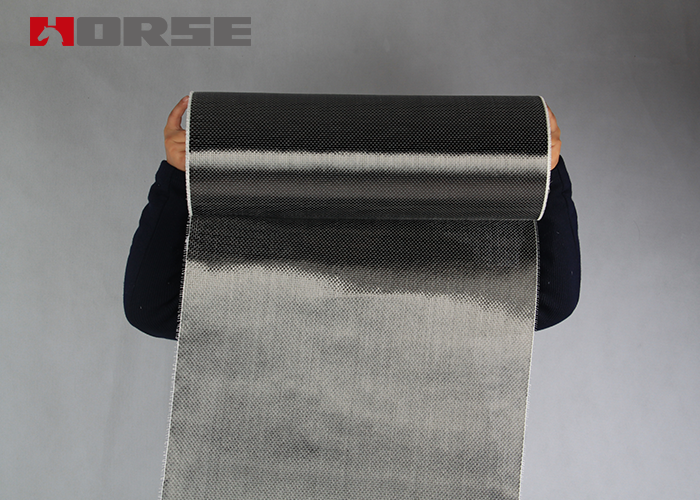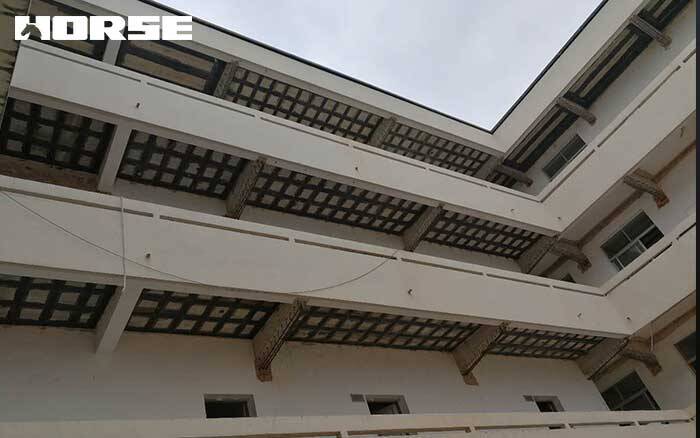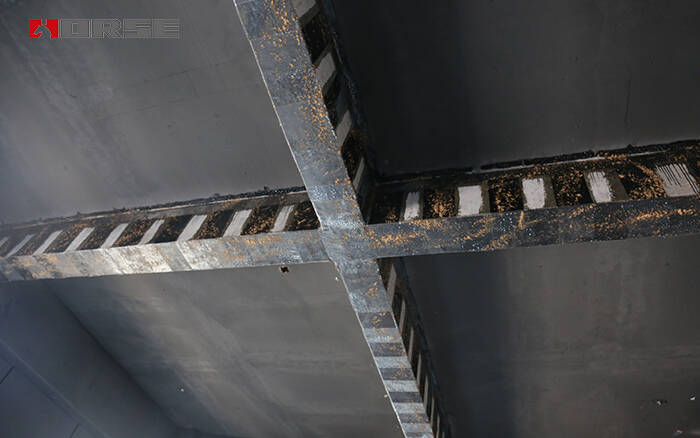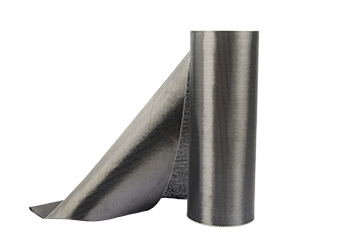Solutions
Horse Construction offers full range of structural strengthening materials with technical supports, documentation supports, products supports, project supports.
Application Of Carbon Fiber In Building Structure Reinforcement And Reconstruction Project

Benefits of using carbon fiber in reinforcement and retrofit of building structures
Compared to previous reinforcement methods, carbon fiber reinforcement works better: carbon fiber materials are especially used in older buildings to reinforce prestressed hollow-core slabs in older houses. Carbon fiber reinforcement does not require the use of large machinery and equipment, and has high gain efficiency and low noise.
The technical advantages of carbon fiber reinforcement can be mainly analyzed as follows:
(1) It has a wide range of applications: carbon fiber can replace sheared and bent steel bars, can also be used to prevent earthquakes and cracks in townhouses or industrial buildings, and can also strengthen anti-corrosion structures. Carbon fiber has a waterproof structure. Epoxy adhesives are used for concrete surfaces reinforced with carbon fibers. The epoxy adhesive itself has good sealing properties. Therefore, the carbon fiber reinforcement method also has a strong sealing ability.
(2) Carbon fiber reinforcement is feasible, and carbon fiber materials are also feasible. The texture is light and thin, no complicated construction machinery is required, and the construction personnel can do it by hand. The carbon fiber reinforcement method can also effectively shorten the project cycle.
(3) The carbon fiber reinforcement method is easy to cut at will. According to the actual reinforcement requirements of the building structure, after the carbon fiber is cut, the reinforced carbon fiber material does not affect the appearance of the building structure.
(4) The carbon fiber reinforcement method has high corrosion resistance. Due to the stable performance of carbon fiber material, it is not affected by the outdoor environment used and can effectively extend the structure of the building.

Application of carbon fiber reinforced materials in various concrete bearing members
Carbon fiber itself has many advantages, such as high strength, corrosion resistance, light weight, large thickness and ease of use. The bond between carbon fibre and concrete can be ensured to a greater extent by choosing an appropriate and efficient joining material.
By applying force, carbon fiber reinforced materials can meet the reinforcement and reinforcement requirements of various load-bearing concrete components when building structures are reinforced.
(1) We can determine the carbon used for reinforcement in the concrete part of the member obtained using this fiber material in terms of strength, stability and load capacity. With some improvements, the overall strength of the reinforcement member has also been significantly improved, and the width of cracks caused by the rupture of the member has also been significantly reduced. When a reinforced component reaches the limit of its load-carrying capacity, the number and width of cracks created by the component will be greatly reduced, and the distribution of cracks will be more regular.
(2) The regular winding of carbon fiber reinforced concrete pressure element on the square concrete column can significantly improve the bearing capacity and stability of the square concrete column. The bearing capacity of concrete columns can also be improved by using carbon fiber reinforcement methods. After reinforcement with carbon fibers, the compressed concrete is compressed under load. However, due to the strong retention of the carbon fiber, it ensures passive retention of the reinforcing elements and generates a corresponding lateral retention force. The load-bearing capacity of concrete compression elements is greatly increased when limited concrete is formed.
(3) The use of carbon fiber in the reinforcement and reconstruction of the building structure can also effectively improve the shear strength of the concrete element. The shear resistance of concrete members can be effectively improved by selecting appropriate reinforcement methods, reinforcement amounts and anchoring methods. In the past, reinforcement and conversion with carbon fiber typically used packaging and bonding methods to get the most out of carbon fiber and achieve better reinforcement strength. However, the winding and bonding process has certain disadvantages, namely, the strengthening process is complicated, which is why U-shaped carbon fiber paste is used instead of carbon fiber paste.
(4) Confined concrete is an important form of composite reinforcement, and its bearing capacity can be greatly improved by using square concrete supports covered with carbon fibers. The load-bearing capacity can be further increased by using concrete supports covered with carbon fibres. CFRC is a passive restraint: as the axial pressure of the concrete increases, the lateral expansion promotes the circumferential expansion of the outer composite, resulting in lateral retention. The stress mechanism depends on two factors: the lateral expansion coefficient of the concrete and the tire stiffness of the outer carbon fiber material. The initial lateral deformation of the concrete column is lower, so the loading of the carbon fiber is lower. During the final loading of a concrete column, the carbon fiber load increases rapidly as the column load increases until it is destroyed.

Application and socioeconomic benefits of carbon fiber reinforcement
Carbon fiber structural reinforcement technology is a new type of reinforcement technology, which is widely used and brings huge economic advantages: carbon fiber fabrics mainly bear the stress on steel bars, and the main task of carbon fiber fabrics is to improve structural components. tensile strength, so this technique is widely used in the reinforcement of concrete structures. The improvement in load-bearing capacity of ordinary profiles of concrete members is smaller than that of carbon fiber fabrics, but the reinforcement is carried out without increasing the weight of the member and without using free space. However, when rebuilding an existing building, the stiffness and strength of the floor slab are weakened to different degrees compared to the case without openings, especially the stiffness is further weakened. Stress concentrations and deviations are concentrated on the sides and short corners of the opening. Therefore, when selecting the reinforcement method, a specific analysis should be carried out according to the span of the soil and the size of the opening to determine the best reinforcement measures.
Epilogue
The carbon fiber material is lightweight and does not require bulky equipment during construction. And it's thin and takes up little space, especially where space is limited, for a tech-enhanced product that might have that advantage. reinforced-concrete structure. The method of joining high-strength carbon fibers with high elastic modulus can achieve the same reinforcement effect as steel plate, but the structural weight is not increased, and its appearance is also light and beautiful. Thanks to this technology, this reinforced structure has excellent resistance: thanks to the reinforcement only with carbon fibers and carrier resin, it does not rust, and it is resistant to acids, alkalis, salts and atmospheric corrosion. It can effectively shorten the construction time.
You can find anything here you are in need of, have a trust trying on these products, you will find the big difference after that.

High strength, unidirectional carbon fiber wrap pre-saturated to form a carbon fiber reinforced polymer (CFRP) wrap used to strengthen structural concrete elements.

High strength, unidirectional carbon fiber fabric pre-saturated to form a carbon fiber reinforced polymer (CFRP) fabric used to strengthen structural concrete elements.

High strength, unidirectional carbon fiber sheet pre-saturated to form a carbon fiber reinforced polymer (CFRP) sheet used to strengthen structural concrete elements.